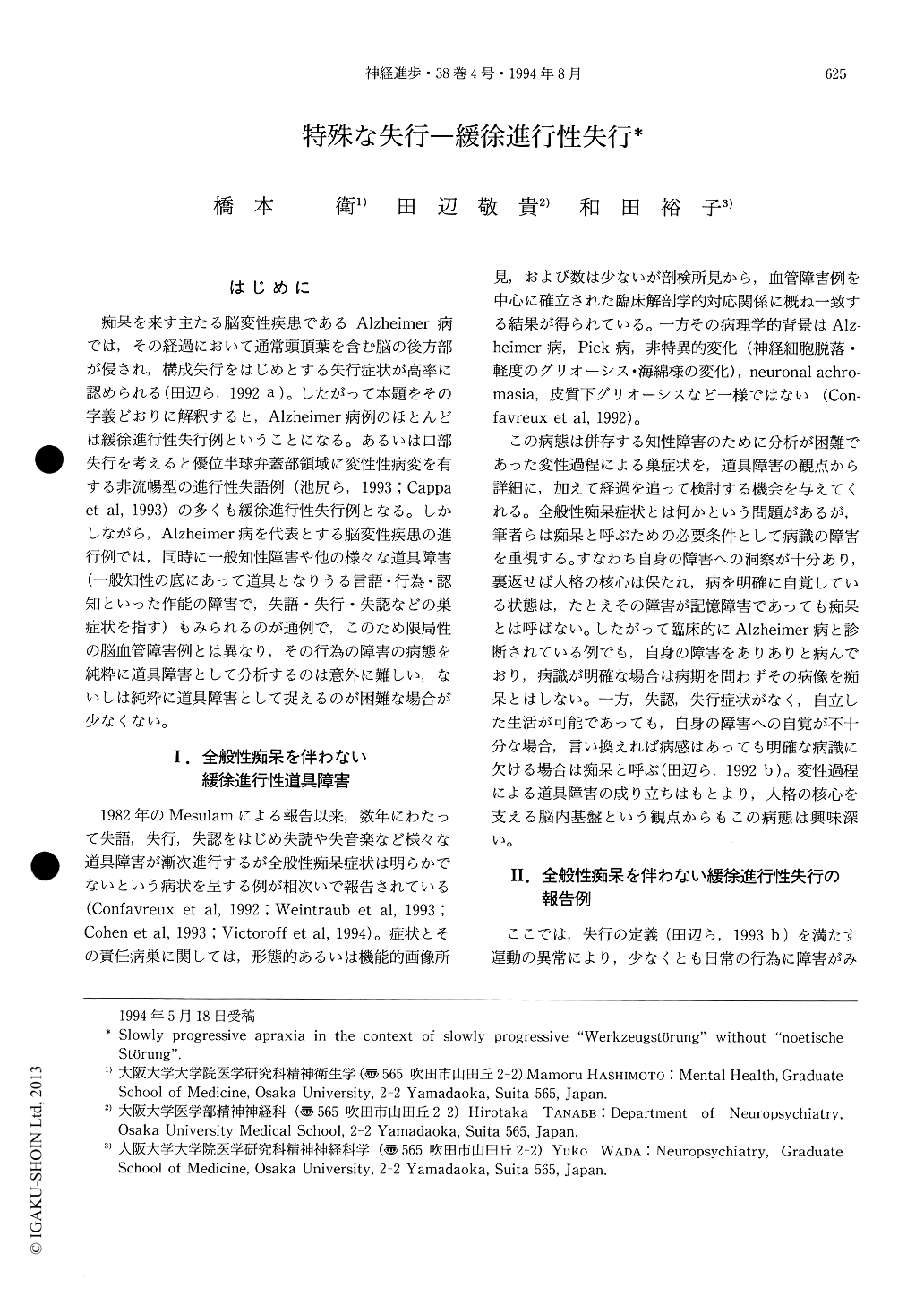Japanese
English
- 有料閲覧
- Abstract 文献概要
- 1ページ目 Look Inside
はじめに
痴呆を来す主たる脳変性疾患であるAlzheimer病では,その経過において通常頭頂葉を含む脳の後方部が侵され,構成失行をはじめとする失行症状が高率に認められる(田辺ら,1992a)。したがって本題をその字義どおりに解釈すると,Alzheimer病例のほとんどは緩徐進行性失行例ということになる。あるいは口部失行を考えると優位半球弁蓋部領域に変性性病変を有する非流暢型の進行性失語例(池尻ら,1993;Cappa et al,1993)の多くも緩徐進行性失行例となる。しかしながら,Alzheimer病を代表とする脳変性疾患の進行例では,同時に一般知性障害や他の様々な道具障害(一般知性の底にあって道具となりうる言語・行為・認知といった作能の障害で,失語・失行・失認などの巣症状を指す)もみられるのが通例で,このため限局性の脳血管障害例とは異なり,その行為の障害の病態を純粋に道具障害として分析するのは意外に難しい,ないしは純粋に道具障害として捉えるのが困難な場合が少なくない。
In 1982, Mesulam drew attention to a clinical picture characterized by slowly progressive aphasia without other cognitive dysfunctions. Since that time, there have been reports on a number of cases of selective involvement of cognitive function such as aphasia, agnosia, apraxia, alexia and amusia. The symptoms of these cases could be related to focal atrophy or focal dysfunction without conspicuousatrophy. Recently there have been several reports of slowly progressive apraxia without dementia. The clinical features of 13 cases in the literature of slowly progressive apraxia and of the present case are summarized in table 1.

Copyright © 1994, Igaku-Shoin Ltd. All rights reserved.


